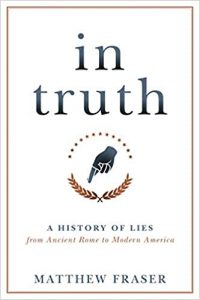Marie Antoinette: Figure of Myth, Magnet for Lies
Marie Antoinette was not entirely innocent in her lifetime; in fact, she was guilty of many extravagances.
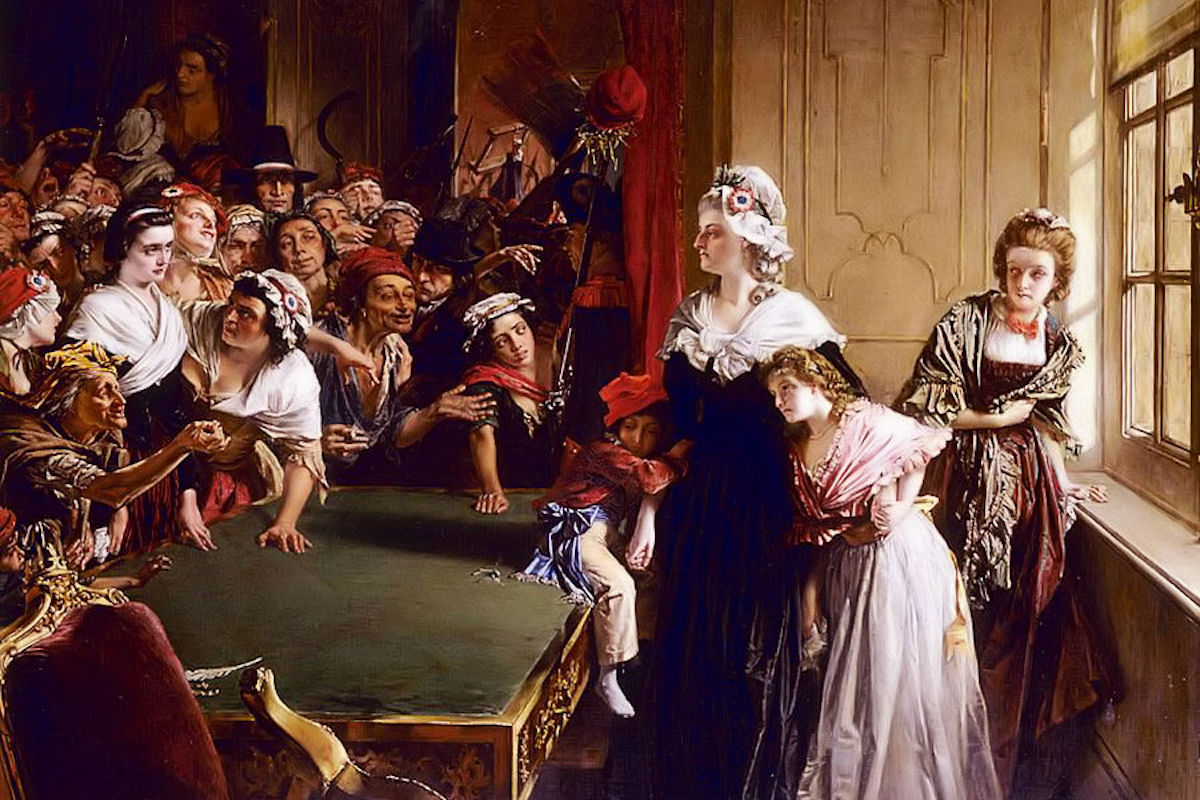
“Let them eat cake.”
It’s one of the most famous remarks in history—an instantly recognizable catchphrase to convey haughty indifference to the misfortune of others. And we all know who said it and why: It was Marie Antoinette (1755–1793), the queen whose life was claimed by the French Revolution, dismissing news that the peasants were starving due to the high price of bread.
In the original French, the Queen allegedly said, Qu’ils mangent de la brioche!, which doesn’t quite translate to “let them eat cake.” Brioche is sweet, eggy bread that tastes only vaguely like cake. The translated English word “cake” made Marie Antoinette seem even haughtier than in French. But it’s beside the point, since Marie Antoinette never uttered “let them eat cake” in any language. There is no historical evidence that she ever uttered that phrase. The story is pure invention. It’s a historical legend that rivals the myth of Nero “fiddling” while Rome burned. And yet this outlandish fabrication has shaped our image of Marie Antoinette for more than two centuries.
Compared to other historical falsehoods, this legend is easy to trace to its source. It was the French philosopher Jean-Jacques Rousseau. In book six of his Confessions, written in 1767, Rousseau wrote of a “great princess” who had, when told that the peasants had no bread, replied with those words cited above, Qu’ils mangent de la brioche! Was Rousseau referring to Marie Antoinette? This is impossible. When he wrote that passage, Marie Antoinette was still a girl living at the Habsburg court in Vienna (under her original name, Maria Antonia Josepha Johanna). Rousseau’s story was entirely made up, probably borrowed from another source. And while his book wasn’t published till 1782, this was still seven years before the French Revolution began. In fact, the first time someone (spuriously) put the words “let them eat cake” in Marie Antoinette’s mouth was a half-century later, in a book published by Jean-Baptiste Alphonse Karr, Les Guêpes.
That we are still attributing this haughty remark to Marie Antoinette reveals how historical falsehoods can become entrenched in popular culture, especially when they confirm collective bias. Following the French Revolution, as republican values took hold in France, portraying Marie Antoinette as a supercilious queen offended no one. She and her Bourbon husband, Louis XVI, had been convicted and executed. To believe that Marie Antoinette had been treated abominably was too great a moral burden on the French national conscience. So she was transformed into an arrogant and extravagant Austrian princess who’d shown only contempt for the French nation. People believed the “let them eat cake” myth because they wanted to believe it.
Marie Antoinette was not entirely innocent in her lifetime; in fact, she was guilty of many extravagances. But she was a much more complex character than the cliché suggests.
When she first arrived in Paris in 1770 as the teenage bride of the French dauphin, Marie Antoinette was tremendously popular. The French papers described her as a glowing goddess of youth. “Born high above all ordinary thrones,” the official court paper, Mercure de France, declared. “To her belongs all the radiance of Divinity.” Four years later, when old king Louis XV died after a long reign, the French nation celebrated the ascension to the throne of the youthful Louis XVI and Marie Antoinette. This was still the era of strict controls on the press in France. The police had even cracked down on public poetry readings after it was discovered that students were reading verse critical of the king. Yet well-connected Parisians managed to pick up gossip at court by attending salons and meeting at cafés and other public places designated for the trading of information. One meeting place was under the famous “tree of Cracow,” a massive chestnut in the Palais Royal gardens. While the Mercure de France reported where the queen was spending Easter, the mauvais propos and bruits publics revealed juicy tidbits such as news of Louis XV’s latest mistress.
Marie Antoinette arrived in Paris at the end of this era of strict censorship, which helps explain why her honeymoon with French public opinion was short-lived. The official press, notably the Mercure and Gazette, continued churning out fawning snippets of society news about the royal couple. But the scandal-mongering libelles and pamphlets had their own paragraph men, called nouvellistes, who picked up “news” from well-informed sources posted on benches in the Tuileries, Luxembourg Gardens, and, of course, under the tree of Cracow. Police efforts to repress nouvellistes’ gossip proved futile in the face of high demand. One famous libelle of the era, Le Gazetier cuirassé promised “scandalous anecdotes about the French court.” (It was printed in London, out of reach of official French censors.) Another publication printed in London starting in the 1760s was the famous Mémoires secrets, an anonymous chronicle of insider gossip and anecdotes from Parisian high society. A scurrilous book about Louis XV’s mistress, Madame du Barry, also appeared as a collection of gossip that nouvellistes had picked up around Paris.
Despite the libelles circulating in Paris, the Bourbon monarchy was still relatively protected compared with the hurly-burly across the channel in London, where coffeehouses buzzed with political innuendo and intrigue. Some French philosophes, it is true, attempted to replicate London’s coffeehouse culture at Parisian cafés, such as the Procope on the Left Bank. (Voltaire frequented the place, where he liked to add chocolate to his coffee.) Other regulars at the Procope—named after the Byzantine writer Procopius, famous for his Secret History—were Rousseau, Danton, and Robespierre, as well as Americans Benjamin Franklin and Thomas Jefferson.
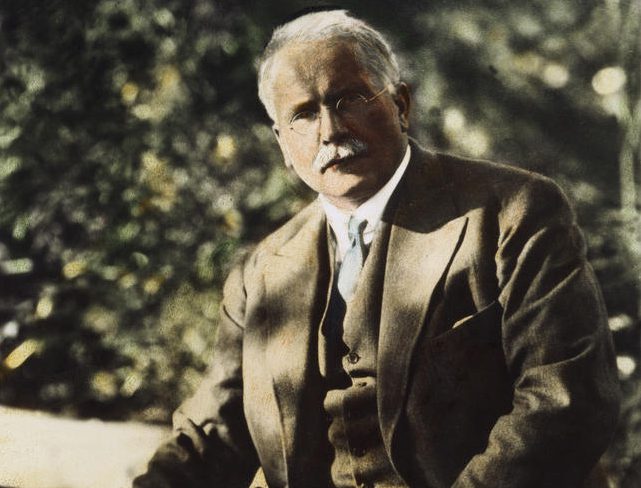
The Parisian equivalent of the coffeehouse was the salon, which differed from London coffeehouses in both ambiance and function. Whereas London coffeehouses were boisterously public, salons were essentially closed spaces, usually held in private homes. Most were by invitation only. Many were hosted by women, usually titled or wealthy ladies with an interest in culture and politics—such as Madame de Rambouillet, Madame Necker, Madame Geoffrin, and Mademoiselle Lespinasse. There was also the Marquise du Deffand, a friend to Voltaire and the English man of letters Horace Walpole, to whom she bequeathed not only her papers, but also her pet dog, Tonton.
As access to these rarefied spaces increasingly became a symbol of social success, admission got more tightly controlled. (Madame Geoffrin expelled Diderot from her salon because she found his conversation “quite beyond control.”) Still, those who frequented salons represented a great diversity within the elites—from rising young writers and established authors to powerful politicians and eccentric aristocrats. The tacit rule was, as in London coffeehouses, that wit was more important than rank. Many great French writers launched their careers thanks to their admittance. One was the philosopher Montesquieu, who found success at the salon of Madame Lambert.
It could hardly be claimed, however, that Parisian salons were dangerous hotbeds of political unrest, though some salons were known to be tolerant of opinions critical of the royal family. They tended to produce writing in the form of epistolary correspondences. Some salons produced weekly newsletters, though they often read like the society pages of a newspaper—announcements of engagements and deaths, information about government proclamations, and the like.
While, over time, the ideas and values that emerged from Parisian salons created an intellectual culture hostile to divine-right monarchy, it took generations for these ideas to germinate. Voltaire’s Lettres philosophiques was published in 1734, Montesquieu’s The Spirit of the Laws in 1748, and Rousseau’s The Social Contract in 1762—all decades before the storming of the Bastille. In comparison to England, where a divine-right monarchy had been toppled a century earlier, the French were still slowly catching up in the mid-18th century.
When Rousseau’s Confessions were published in 1782, it is doubtful that Marie Antoinette was even aware of the book. She had more pressing things on her mind. Even if revolution was still seven years away, there were already rumblings of discontent. The pamphlets in France were increasingly impudent and fearless about satirizing the royal family. Marie Antoinette’s extravagant tastes and spending habits were the subject of spiteful commentary. The fact that she was a foreigner did not help. In fact, many at court resented her for that reason alone.
Austria had been a longstanding enemy of France (her marriage to Louis XVI having been part of an effort to patch things up as part of a wider European power realignment). Marie Antoinette was described in pamphlets as l’Autrichienne—a proper feminine noun for Austrian, but the suffix chienne also meant “bitch.” There was speculation, fueled by poisoned gossip, about her sexual dalliances, notably with the Swedish ambassador to the French court, Count Axel de Fersen. Insinuations of infidelity were made plausible by rumors that Louis XVI was impotent (“mauvais fouteur”). When Marie Antoinette became pregnant, the pamphlets speculated on the real identity of the biological father.
Things took a turn for the worse for the foreign-born Queen when, in 1785, the so-called “Diamond Necklace” scandal erupted. As the great French diplomat Talleyrand remarked at the time, “Watch out for this diamond necklace business, it may well rock the throne of France.”
* * *
Today, the Diamond Necklace affair has been relegated to the status of sensational footnote in history books about the French Revolution. Throughout the 19th century, however, the scandal was widely believed to have been a major factor in the overthrow of the Bourbon monarchy. Decades after the French Revolution, Napoleon observed from the vantage point of his post-Waterloo exile: “The Queen’s death must be dated from the Diamond Necklace trial.” In Germany, the poet Goethe wrote a play based on the scandal, titled Der Grosse Cophta. “The history of the ‘Necklace’ had made an unspeakable impression on me,” he recalled.
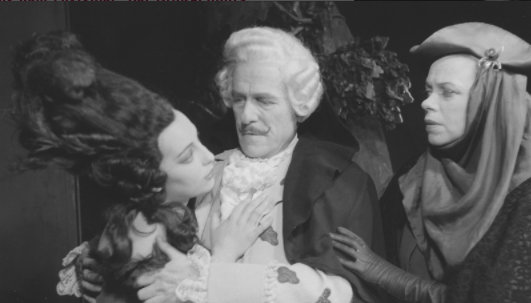
And here’s the irony: While the Diamond Necklace affair was the scandal that most tarnished Marie Antoinette’s reputation, it was one in which she was almost certainly guiltless.
The origins of the affair stretched back to Louis XV, who wished to lavish on his mistress, Madame du Barry, a splendid diamond necklace containing 647 stones and weighing 2,800 carats (worth roughly $15 million today). But Louis XV died before the sale of the necklace was concluded. And when young Louis XVI took the throne, the Paris jewelers Boehmer and Bassenge hoped the new king would purchase the same necklace for his own queen, Marie Antoinette. However, she refused to accept a piece of jewelry that had been created for the previous king’s mistress.
Meanwhile, a socially ambitious minor aristocrat named Jeanne de la Motte was plotting to get her hands on the necklace. Married to the Comte de la Motte, she was also the mistress of Cardinal de Rohan, former French ambassador to Marie Antoinette’s native Austria. Madame de la Motte managed to convince Cardinal de Rohan not only that Marie Antoinette wished to possess the necklace, but that she was acting on the Queen’s behalf. He could ingratiate himself at court, she insisted, by obtaining it. Cardinal Rohan foolishly purchased the necklace on credit, under the naive belief that he’d be repaid by Marie Antoinette. The scam concluded with Madame de la Motte stealing the necklace from the cardinal and, using her husband’s louche connections, selling it in pieces through fences in England.
This tawdry business was closer to comic opera than an affair of state. But when the fraud was discovered, the scandal gripped Parisian society. Louis XVI was so infuriated that he had Cardinal de Rohan arrested and imprisoned in the Bastille, which only heightened public interest. Marie Antoinette was already being caricatured in pamphlets as a depraved nymphomaniac. It was now open season.

In some caricatures, she appeared as a wild beast, a tiger feeding on the French nation. In others, she was depicted as an ostrich, a French wordplay with her home country Autriche, for Austria, which reads like autruche for ostrich. Even worse, she was depicted in pornographic postures, legs open and genitals gaping, cuckolding her obese husband with a succession of lovers, including lesbian trysts. Allusions to her sexual appetites suggested a carnal relationship with Satan. Robespierre’s publication Le Journal des hommes libres described her as “more bloodthirsty than Jezebel, more conniving than Agrippina.” The pamphlets blamed Marie Antoinette for all the nation’s misfortunes, including economic recession. She was so hated by the French public that there were serious concerns for her physical safety.
An attempt at damage control was made by commissioning an official portrait of Marie Antoinette to be displayed in the Grand Salon of the Louvre. The painting by Élisabeth Vigée Le Brun showed the Queen as loving mater familias surrounded by her children. As a PR strategy, the portrait was too little, too late. Its completion was delayed by two years, during which time an empty frame was displayed in the Louvre. When the painting finally appeared, the public was indifferent. The portrait was removed and placed in a remote wing of Versailles palace.
Cardinal de Rohan, meanwhile, was tried for his role in the Diamond Necklace affair. Astonishingly, he was acquitted. The scheming Madame de la Motte met a different fate. She was found guilty of theft and sentenced to be whipped and branded on the shoulder with the letter V for voleuse (thief). She was also incarcerated in the Salpêtrière prison in Paris, but escaped to London. In 1789, she published a book, Mémoires justificatifs, a scathing tell-all memoir about Marie Antoinette. It was a good year to attack the French monarchy, for the revolution was just getting going. Madame de la Motte was never returned to France to face justice. Exiled in London, she died in 1791 after falling from a window, apparently fleeing debt collectors. She was buried in St. Mary’s Churchyard in south London.

Though totally innocent of wrongdoing in this affair, Marie Antoinette had already been found guilty in the court of public opinion. The damage to the French monarchy was irreparable. Knocked off their pedestal by pamphlets and pornographic caricatures, the Bourbons became objects of public scorn—a desacralization of the monarchy that, in time, helped set off the chain of events that led to Louis XVI and Marie Antoinette being carted off to the guillotine. One hundred and forty years after the execution of Charles I in London, the French nation made the same dramatic rupture with divine-right monarchy.
On the morning of her execution in October 1793, Marie Antoinette’s hair was shorn, and her hands were tied behind her back. At her prison in the Conciergerie along the Seine, she was put on an open cart and drawn through the streets of Paris. Throngs of people lining the streets jeered and insulted her.
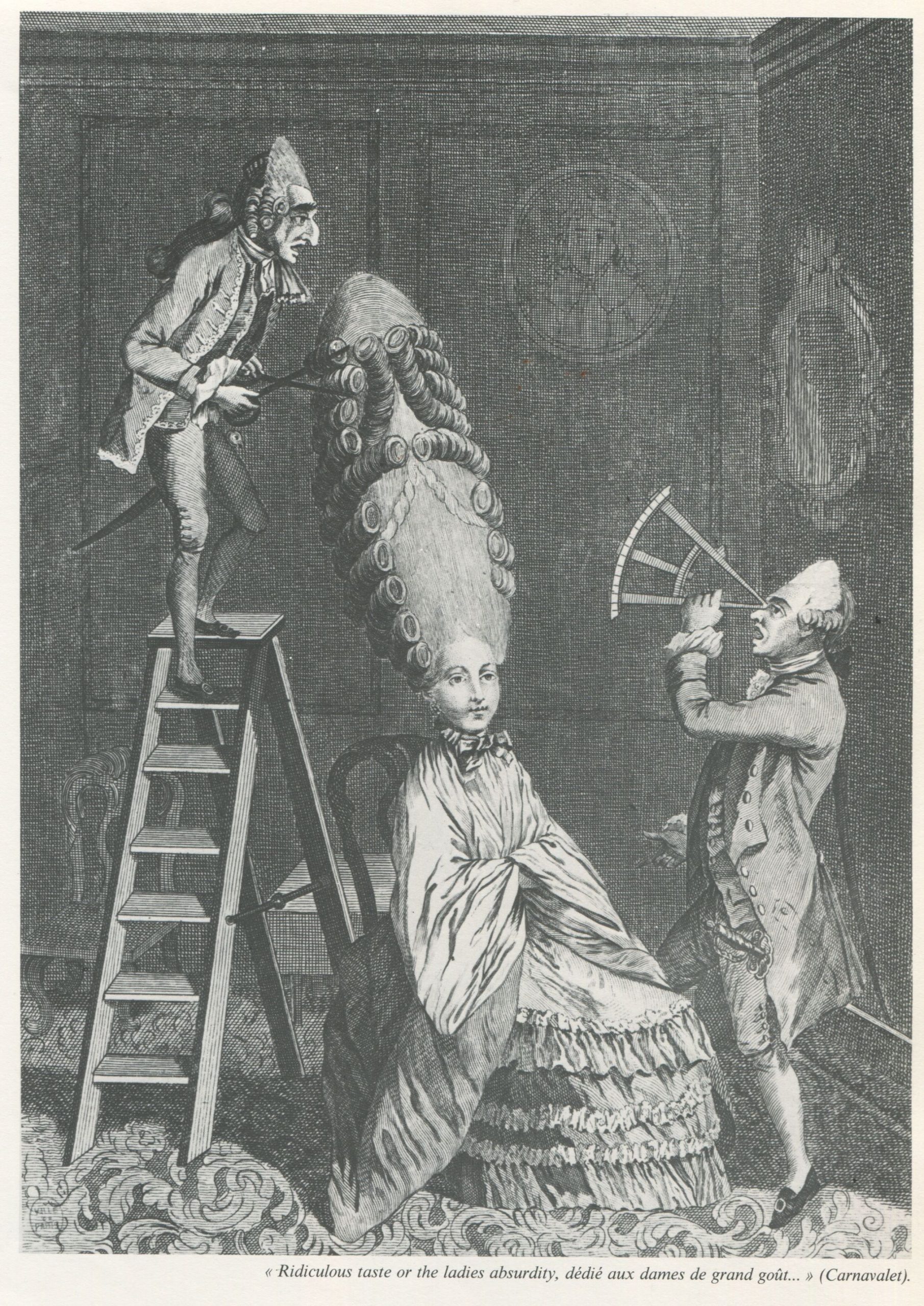
At the Place de la Concorde, where her husband Louis XVI had been executed nine months earlier, a massive crowd was waiting. The mob watched in silence as Marie Antoinette mounted the steps of the scaffold. According to legend, she accidently stepped on the foot of the executioner, Henri Sanson, and humbly apologized: Monsieur, je vous demande pardon, je ne l’ai pas fait exprès.
Those were her last words. When the guillotine blade came slicing down, Sanson picked up the head by the hair and, holding it up for the crowd to see, shouted, Vive la République! Marie Antoinette’s decapitated corpse was later thrown into an unmarked grave in the nearby Madeleine cemetery.
From the instant she was beheaded, Marie Antoinette became a figure of myth. Her portraits—alabaster complexion, rosy cheeks, powdered bouffant hair—became instantly recognizable. She was arguably one of the first iconic celebrities of the modern world. Successive generations projected onto her legend their inner-most fantasies, fetishes, and delusions.
* * *
Undoubtedly, the strangest tale about the mania for Marie Antoinette dates to the late Victorian period. Two English tourists visiting Versailles Palace in 1901 claimed to have met the French queen in the flesh. The two middle-aged women, Anne Moberly and Eleanor Jourdain, were from educated families. Moberly’s father was headmaster at Winchester College and later Bishop of Salisbury. Miss Jourdain, the daughter of a vicar, wrote several books and became vice principal of St. Hugh’s College, Oxford. In August 1901, they were in Paris together and decided to take the train out to Versailles. At the palace, they were walking through the gardens near the Petit Trianon, the small chateau on the grounds favored by Marie Antoinette. They suddenly came upon the strange figure of a black-haired, pock-faced man dressed in the attire of a bygone era. Near the Temple de l’Amour, Miss Moberly caught sight of a fair-haired lady dressed in a full white shirt. She was sitting on the grass sketching. Miss Jourdain saw nothing. Suddenly, the two Englishwomen were overcome with powerful feelings of fatigue and melancholia. Later, when they reached the Petit Trianon, a wedding party was being held inside the chateau, though everyone appeared dressed from another epoch.
Miss Moberly and Miss Jourdain realized later that the people they had seen at the Petit Trianon did not belong to the present. The two women must have traveled back in time to the late 18th century. Miss Moberly had laid eyes on Marie Antoinette, the fair-haired lady in white on the lawn.
But they still needed proof. So they threw themselves into obsessive research, combing the archives to discover everything they could find on Marie Antoinette’s life at the Petit Trianon. Everything they came upon corresponded to what they had witnessed with their own eyes. There was no doubting their paranormal experience. They had slipped through time and seen the real Marie Antoinette in the gardens of the Petit Trianon.
In 1911, the two English women recounted their experience in a book, An Adventure, using the pseudonyms Elizabeth Morison and Frances Lamont. The book immediately caused a sensation. Among those who were gripped by their time-travelling tale was a young J. R. R. Tolkien. So was Tolkien’s friend, fantasy writer C. S. Lewis, whose later book about time travel, The Dark Tower, referred to “the ladies of the Trianon.” At the turn of the century in England, there was great interest in the paranormal. Leading proponents included the eccentric occultist Aleister Crowley, author of The Book of Lies. It was an era when fascination with spiritualism created a culture of credulity in the face of fantastic fictions and clever hoaxes.

One of the most famous hoaxes of that era was the so-called Cottingley Fairies. Two girls in Yorkshire, cousins Elise Wright and Frances Griffith, took a series of five photos in 1917 showing themselves near a stream in the presence of tiny fairy-like creatures. Elsie’s father Arthur Wright, an amateur photographer, never doubted that the photos were fabricated. But the girl’s mother Polly was more credulous. The pictures became public when Polly Wright attended a lecture on “fairy life” at a Theosophical Society meeting in Bradford. They were quickly circulated among the group’s adherents, who found the photographed fairies consistent with their theosophical beliefs. The extraordinary images soon came to the attention of the famous author Sir Arthur Conan Doyle, an ardent spiritualist who was writing an article on fairies for the Strand Magazine. Conan Doyle, the creator of Sherlock Holmes, was convinced the fairies were real. His article was published under the headline Fairies Photographed, describing the Cottingley Fairies as an “epoch-making event.”
“The recognition of their existence will jolt the material twentieth century mind out of its heavy ruts in the mud, and will make it admit that there is a glamour and mystery to life,” wrote Conan Doyle. “Having discovered this, the world will not find it so difficult to accept that spiritual message supported by physical facts which has already been put before it.” In 1922, Conan Doyle followed up with a book, The Coming of the Fairies, in which he announced that proof of fairy existence was a blow to cold Victorian science, which “would have left the world hard and clean and bare, like a landscape in the moon.” He added: “There is nothing scientifically impossible, so far as I can see, in some people seeing things that are invisible to others.”
Conan Doyle was wrong of course. Like many other spiritualists at the time, he’d been taken in. The photos were fake. The two girls Elsie and Frances both lived into their 80s. Toward the end of their lives in the 1980s, they admitted that they’d fabricated the fairy photos using paper cutouts.
At the outset of the century, however, the public mood was receptive to paranormal stories about fairies and a time slip back to the court of Louis XVI and Marie Antoinette. Like skeptics who doubted the authenticity of the fairy photos, critics argued that the two authors of An Adventure were plainly deluded about seeing Marie Antoinette. Yet Miss Moberly and Miss Jourdain fiercely answered these skeptics in a second edition, insisting that everything they had recounted was completely factual.
The mystery surrounding their outlandish claims continued after their deaths—Miss Jourdain died in 1924, Miss Moberly in 1937. In 1959, a translation of An Adventure appeared in French featuring a preface by the poet Jean Cocteau. Biographers and psychologists meanwhile attempted to understand what could have happened at Versailles Palace back in 1901. One author, looking for a banal explanation, conjectured that the two English ladies had simply come across a costume party thrown by the famous dandy, Robert de Montesquiou, the aristocratic friend of Marcel Proust. Montesquiou was known to have given lavish fancy-dress parties at the Petit Trianon in the summer of 1901. Another theory, more psychoanalytical, claimed that the two women had a homoerotic fixation on Marie Antoinette. Their hallucination at Versailles Palace was an expression of repressed sexual desires—a homosexual legitimation fantasy.
It is also possible that both women had been aware of other Marie Antoinette apparition stories published in the previous years, including one titled Dream Romance. In the Victorian period, many of the books written about Marie Antoinette were romanticized apologies that idealized the French queen—and, paradoxically, invited the suggestion of feminine homoeroticism by dismissing claims that she had lesbian affairs. The myths, legends, and fetishistic fascination with Marie Antoinette have taken many forms, and still flourish to this day.
